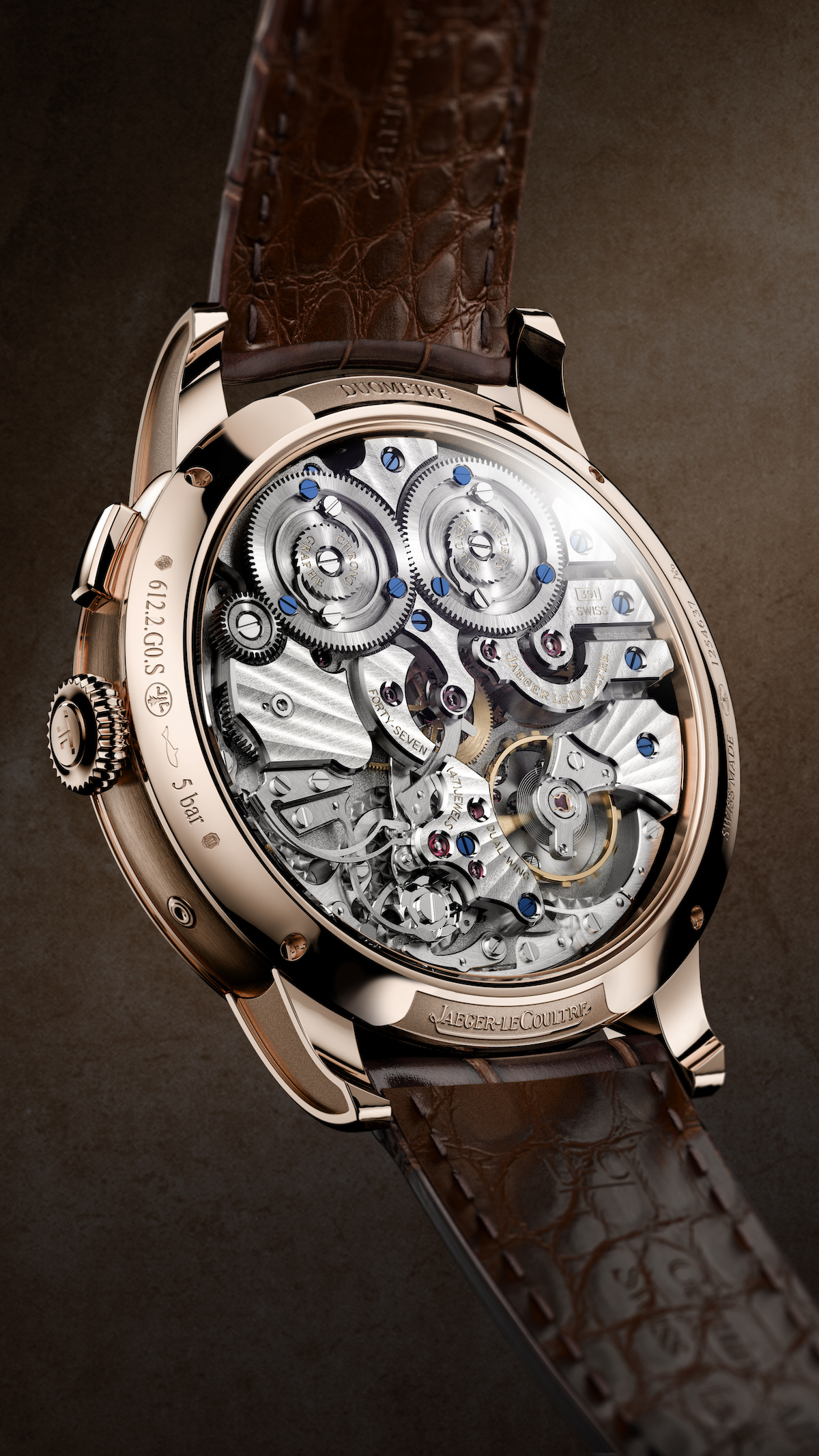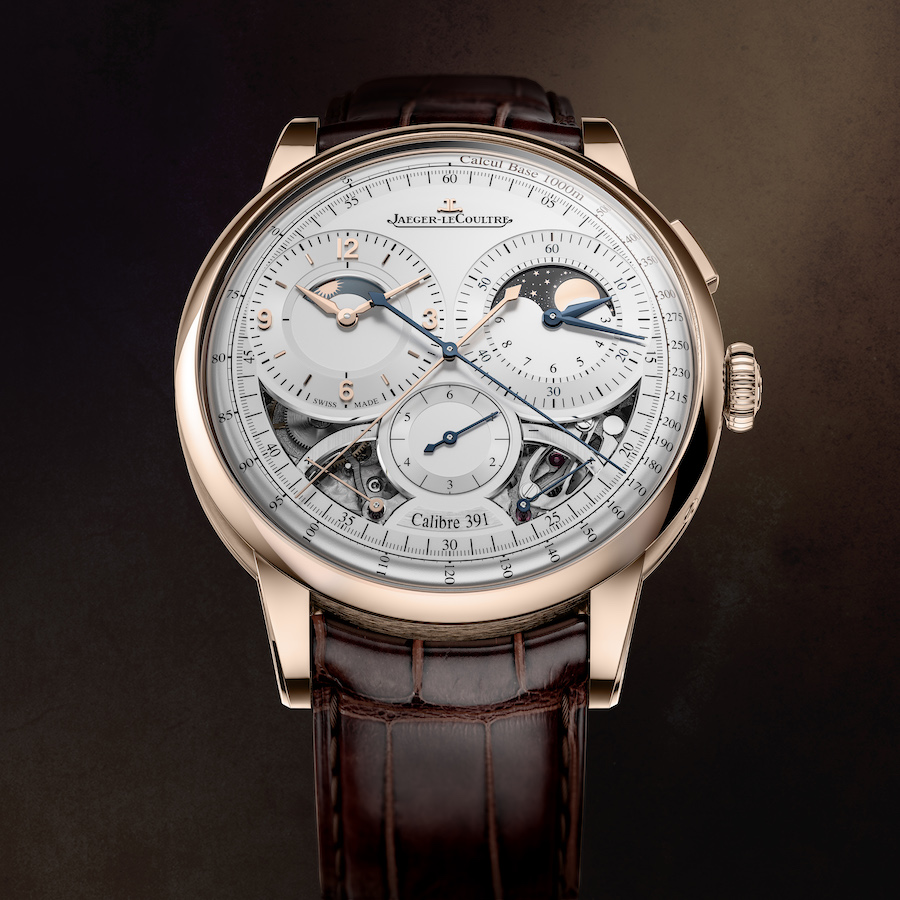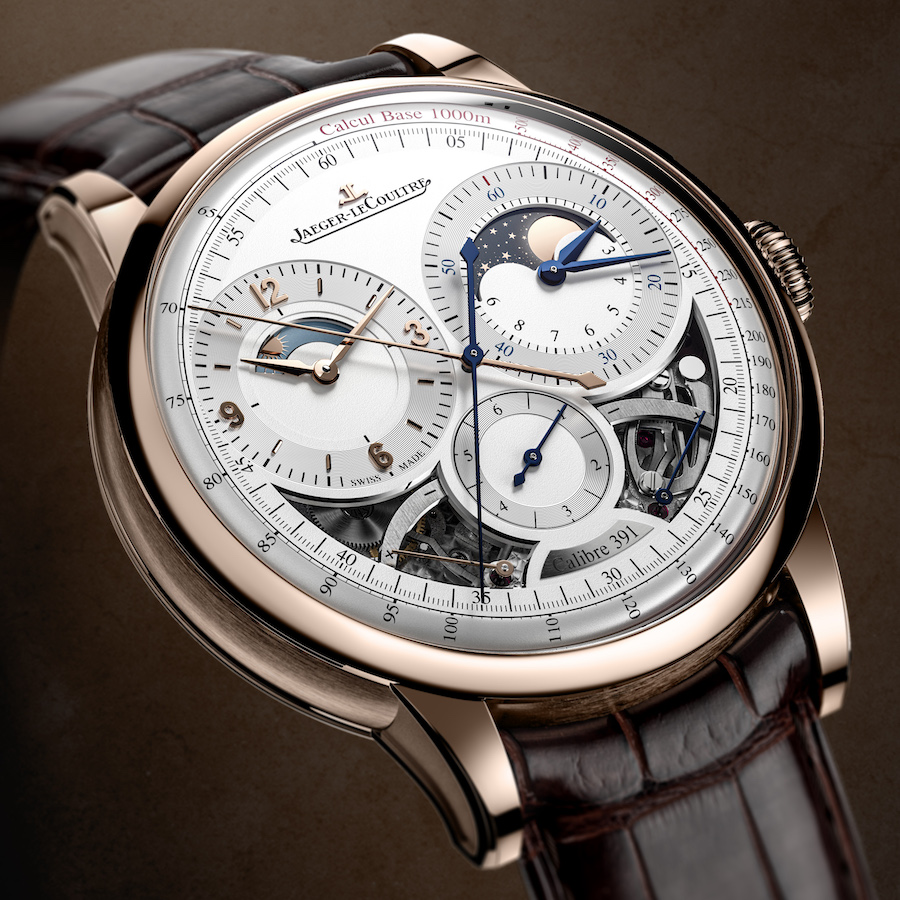By Nancy Olson

Jaeger-LeCoultre Duomètre Chronograph Moon as unveiled at Watches & Wonders Geneva 2024
Precision watchmaking has always been a major part of Jaeger-LeCoultre’s narrative. In fact, that is most likely why the brand selected the theme “Mastery of Precision” for this year’s spectacular unveilings at Watches & Wonders Geneva – all revolving around its beloved Duometre collection. Additionally, this year’s new Duomètre Chronograph Moon is an important chapter in its ongoing story – one that marries the precision of the chronograph with the moon phase indication.
Built upon the Duomètre mechanism introduced in 2007, the 2024 Moon model has a new movement and an updated look, marrying mechanics and aesthetics in one gorgeous watch.
A Quick Jaeger-LeCoultre Duomètre Recap
Understanding why the Duometre is so important means understanding how most complications work. Generally, they draw on some of the power provided by the watch’s barrel to operate, disrupting the constant supply that is required by the escapement to optimally perform its timekeeping tasks.

The case back of the Jaeger-LeCoultre Duomètre Chronograph Moon watches showcase the all-new movement.
But the Duomètre, patented in 2007 by Jaeger-LeCoultre, features two separate barrels and two independent gear trains: one to drive the escapement and one to power the complications—both integrated into a single caliber and linked to a single escapement. Thus it is possible to ensure that the movement’s isochronism is not compromised by the operation of any complication, according to Jaeger-LeCoultre.
Jaeger-LeCoultre Duometre Chronograph Moon Caliber 391

Jaeger-LeCoultre unveils two versions of the Duomètre Chronograph Moon
The revolutionary new Caliber 391 that powers the Duomètre Chronograph Moon and was several years in the development stages, combines a manually wound mono-pusher chronograph with moon phase and night-day complications, two power reserve indicators and a seconde foudroyante (flying second) display. When the chronograph is activated, the flying second hand begins its one-second rotation, during which it beats six times—stopping immediately when the chronograph timer is stopped and providing accuracy of 1/6 of a second.
Much of the caliber is open-worked, visible via the dial side apertures and the transparent crystal caseback. Exquisite decoration is the hallmark here, with Geneva stripes on the bridges, perlage on the main plate, and blue screws providing an elegant contrast. Since this is a manually wound caliber, there is no winding rotor to obstruct the view of the chronograph levers.

The platinum Jaeger-LeCoultre Duomètre Chronograph Moon sells for $86,000.
The dial has a three-counter layout and long thin hands that are a hallmark of the Duomètre collection. The moon phase display is artfully integrated into the chronograph subdial at 3 o’clock, and its blue background is balanced by the night-day display integrated into the time subdial at 9 o’clock. The seconde foudroyante is at 6 o’clock, and the two power reserve indicators (50 hours each barrel) are shown on the arc-shaped bridges flanking it. A tachymeter scale is on the periphery.
The curvy new 42.5mm case is based on the savonette pocket watches made by Jaeger-LeCoultre in the 19th century. And the crown, which winds both barrels (forward for the barrel that provides power for the timekeeping function and backward for the complications), is a new design as well.
The Duomètre Chronograph Moon is available in pink gold with a silver opaline dial that sells for $70,000, or in platinum with a copper-colored dial variation retailing for $86,000.

The 18-karat pink gold version of the Jaeger-LeCoultre Duomètre Chronograph Moon sells for $70,000.





